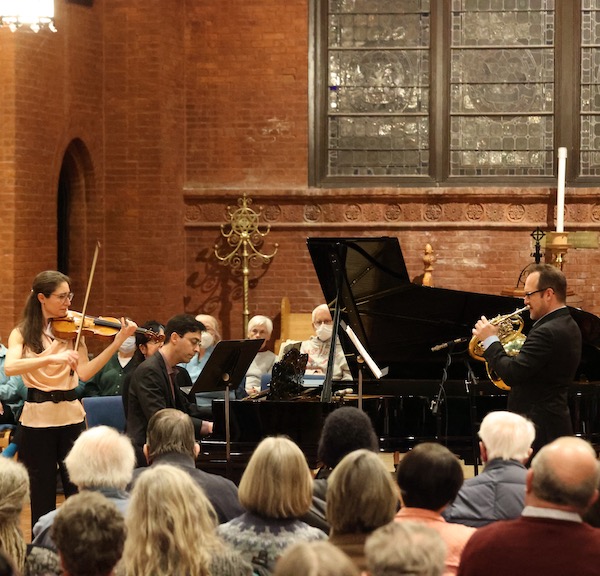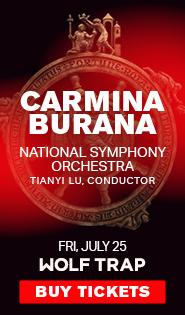Chiarina Chamber Players serve up a bracing program of Brahms and the Schumanns

The Chiarina Chamber Players performed Brahms’ Horn Trio and other works Sunday night at St. Mark’s Episcopal Church. Photo: Benjamin Scott
With the works of Clara Schumann enjoying a revival on concert programs, presenters have often paired these pieces with the output of Robert Schumann and Johannes Brahms, revisiting the 19th-century musical world and well-documented personal relationships between these artists.
The Chiarina Chamber Players—whose name is drawn from the section of Robert Schumann’s Carnaval dedicated to the 15-year-old Clara Wieck—appropriately offered their own take on this trio with a program Sunday night at St. Mark’s Episcopal Church on Capitol Hill. Chiarina’s co-artistic directors, pianist Efi Hackmey and cellist Carrie Bean Stute, were joined by familiar faces for D.C. audiences: National Symphony Orchestra concertmaster Nurit Bar-Josef and principal horn player Abel Pereira.
Pereira and Hackmey opened the program with Robert Schumann’s Adagio and Allegro in A-Flat major for horn and piano, a work Clara Schumann called, “brilliant, fresh and passionate.” Hackmey set a spacious tempo for the Adagio, accompanied by long-breathed, elegiac lines from Pereria’s horn. The duo took a sprightly approach to the Allegro, though occasional dragging and lack of clarity in the fleet passagework for the horn sometimes inhibited overall cohesion.
Bar-Josef and Carrie Bean Stute joined Hackmey for Clara Schumann’s 1846 Piano Trio in G minor, one of the summits of the composer’s output, written amid hardships in her life and marriage to Robert. Bar-Josef’s violin was irresistible in the Allegro, tackling the opening statement with a singing tone and richly characterized sense of line. Ensemble balances were a bit of a challenge to start, with Stute’s cello sometimes getting lost in the mix and Hackmey’s piano occasionally sounding too forward.
Stute’s cello found more chances to come to the fore in the Scherzo, offering a lovely, pure sound in conversation with Bar-Josef’s refined handling of the lilting violin line. The following Andante saw Bar-Josef offering a gorgeous rendition of the main theme, echoed shortly thereafter by Stute, the group making much of the contrast between these lyrical portions and the dramatic B sections. The mercurial finale featured lively interplay from the group around Schumann’s intricate shifts in affect and pacing. Hackmey excelled in delicate filigree passages above the strings, though some of the bravura piano music in the final stretch felt too cautious.
After the half, Hackmey, Bar-Josef, and Pereira returned for a winning performance of Brahms’ 1865 Horn Trio in E-Flat major, written to commemorate the death of Brahms’ mother. One of the few chamber works for this unique instrumentation, Brahms intended the work for the natural horn at a time when the modern valved horn was becoming dominant.
The Andante enchanted from the start, Bar-Josef’s violin trading mournful lines with the horn against Hackmey’s gently roiling piano, all building in an imposing crescendo. Pereira chose a brassier color for the heroic horn calls which punctuate the outer allegro sections of the Scherzo, set against brilliant playing from Bar-Josef, who thrilled with virtuosic shifts between detailed passage work and soaring lyrical passages.
Hackmey opened the Adagio with muted, funereal colors in the piano, setting the mood for a succession of quiet, exposed horn passages that featured some of Pereira’s most glowing, intimate playing. A breakneck finale showcased tight-knit work from the ensemble, led by the infectious confidence of Bar-Josef’s violin, which danced from the playful theme to blistering attacks in the repeated figures that recur throughout the movement.
The Chiarina Chamber Players’ next program presents works of Mozart and Messiaen at St. Mark’s Capitol Hill, 7:30 p.m. April 16. chiarina.org

